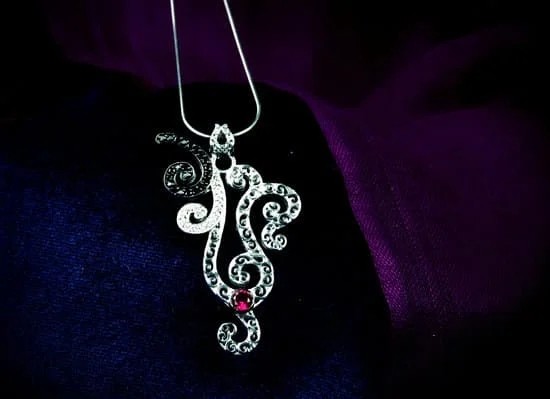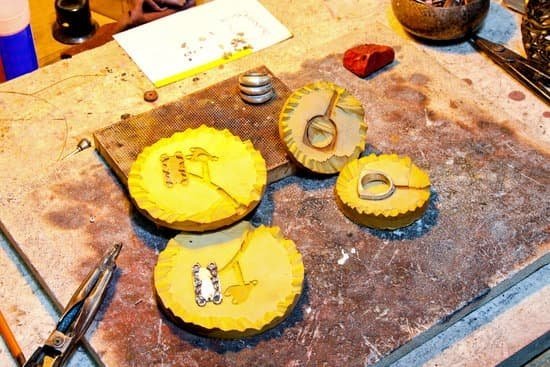Diamonds have long been a symbol of love, luxury, and beauty. These precious gemstones have captivated the human imagination for centuries and have been treasured throughout history for their rarity and brilliance.
But when exactly did diamonds make their transition from raw gemstones to exquisite jewelry? In this article, we will delve into the fascinating journey of diamonds, exploring their ancient origins, their symbolism in ancient civilizations, the innovation of diamond cutting techniques, and the development of diamond jewelry as a cultural phenomenon.
The story of diamond jewelry begins with its ancient origins. Diamonds were first discovered in India around 4th century BC, at a time when they were primarily appreciated for their natural beauty rather than as adornments. They were valued for their hardness and rarity and believed to possess mystical powers that could ward off evil spirits and bring good fortune. Back then, diamonds were mostly found in alluvial deposits along riverbanks or washed up on shorelines after heavy rains.
As more civilizations began to encounter diamonds, their significance evolved into symbols of power and prestige. Ancient Egyptians believed that wearing diamonds was a way to connect with the gods and used them as decorative accents in ceremonial attire. In India, diamonds played an important role in religious rituals and adorned statues of deities.
Stay tuned as we delve deeper into the history of diamond appreciation, exploring the advent of diamond cutting techniques that transformed rough gemstones into dazzling jewels fit for crowns. We will also uncover how a marketing campaign shifted the focus from just appreciating diamonds to using them as engagement rings.
Through our journey, we will unravel the rise of diamond jewelry in the 20th century with an exploration of its modern traditions surrounding weddings, anniversaries, and beyond. Furthermore, we will address ethical concerns related to diamond mining and discuss the emergence of lab-grown diamonds as an alternative.
Finally, this article will look at the future trends and innovation in the 21st century diamond industry, giving readers an insight into what lies ahead for this timeless symbol of beauty and luxury. In the end, it becomes clear that diamonds truly became jewelry when they were embraced by cultures across time, transcending their natural allure to become treasures that hold sentimental value and speak to our deepest emotions.
The ancient origins of diamond appreciation
Diamonds have captivated human beings for centuries, with their beauty and rarity playing a significant role in their widespread admiration. The origins of diamond appreciation can be traced back to ancient civilizations, where these precious gemstones were revered for their mystical properties and symbolic importance.
In ancient India, diamonds were considered as one of the most prized gemstones. They were believed to possess supernatural powers and were often used in religious ceremonies or worn by royalty as a symbol of power and prestige. The Sanskrit word “vajra,” meaning thunderbolt or diamond, reflected the strength and invincibility associated with this exquisite gemstone.
Similarly, in ancient Rome, diamonds held a special place in society. They were believed to be tears shed by the gods or splinters from falling stars, further enhancing their aura of mystique and divine connection. Roman elites would wear diamonds not only as jewelry but also as talismans for protection against evil forces.
As civilizations evolved, so did the appreciation for diamonds. Ancient techniques of cutting and polishing diamonds emerged around the 14th century in Europe, allowing these raw gemstones to be transformed into stunning pieces of jewelry. With advancements in craftsmanship, diamonds became more accessible to a broader range of individuals who desired to adorn themselves with these dazzling gems.
| Culture | Significance |
|---|---|
| Ancient Egypt | Diamonds represented eternity and were used both in jewelry and burial rituals. |
| Ancient China | Diamonds symbolized purity and wealth and were considered auspicious for weddings. |
| Ancient Greece | Diamonds were associated with the gods and goddesses, believed to possess protective powers. |
These early civilizations laid the foundation for diamond appreciation, establishing them as prized possessions with deep cultural significance. As time went on, diamonds would evolve further in their role as both decorative jewelry and symbols of love and commitment.
Diamonds in ancient civilizations
Throughout ancient civilizations, diamonds were highly coveted and revered as a symbol of power and prestige. This section explores the significance of diamonds in these ancient societies and delves into their use as status symbols.
Symbolism and Status
In ancient civilizations such as ancient Egypt, Mesopotamia, and India, diamonds held deep symbolic meaning and were associated with wealth, power, and royalty. The rarity and beauty of diamonds made them highly sought after by rulers, nobles, and high-ranking individuals who used them to showcase their social status.
Diamonds were often reserved for the elite class due to their scarcity and difficulty in sourcing. Their rarity contributed to their perceived value, creating an air of exclusivity around those who possessed them. In some cultures, diamonds were even believed to possess mystical or protective properties, further enhancing their allure as a symbol of authority.
Royal Adornments
The use of diamonds in jewelry was most prevalent among ruling classes during ancient times. Kings, queens, emperors, and other monarchs adorned themselves with diamond-encrusted regalia as a testament to their power and divine authority. These intricate pieces featured diamonds set in gold or silver settings and were often crafted with meticulous attention to detail.
Diamond jewelry was not limited to royalty alone; noble families also frequently displayed their status through elaborate diamond adornments. The size, quality, and quantity of the diamonds adorning one’s person often indicated both wealth and influence within society.
Additionally, diamonds were sometimes incorporated into ceremonial objects such as crowns or scepters that acted as tangible representations of royal power. These objects played significant roles in religious ceremonies or important state occasions.
Evidence from Archaeological Finds
Archaeological finds provide evidence of the widespread use of diamond jewelry in ancient civilizations. For example, excavations at Mohenjo-daro in the Indus Valley have uncovered jewelry pieces dating back to 2500 BCE, featuring diamonds set in gold and silver. Similarly, burial sites of ancient Egyptian pharaohs revealed intricate diamond-encrusted jewelry, emphasizing their association with the ruling class.
These archaeological discoveries highlight the longstanding fascination and appreciation for diamonds as a symbol of power and prestige throughout ancient civilizations. The allure of diamonds would continue to endure, evolving through centuries and shaping the way we perceive and value these precious gemstones today.
The advent of diamond cutting techniques
Diamond cutting techniques have played a crucial role in transforming raw gemstones into exquisite jewelry pieces. The art of cutting diamonds is an ancient practice that has evolved over time, resulting in the dazzling and intricate designs we see today. In this section, we will delve into the history of diamond cutting techniques and how they have contributed to the beauty and brilliance of diamond jewelry.
One of the earliest known methods of diamond cutting can be traced back to India in the 14th century. Indian lapidaries developed a technique called “point cut” where the natural octahedral shape of the diamond was retained with minimal facets. This process allowed for maximum preservation of weight but lacked the brilliance seen in modern-day diamond cuts.
However, it was not until the 17th century that significant advancements were made in diamond cutting techniques. A Flemish diamond cutter named Lodewyk van Bercken revolutionized the industry by developing a technique known as “bruting.” This involved grinding two diamonds against each other to create round-shaped stones while reducing loss of weight. It was a significant breakthrough as it resulted in more symmetrical and radiant gems that could be used for jewelry purposes.
Over time, more sophisticated cutting styles emerged, including rose cuts, table cuts, and old mine cuts. These early cuts had limited facets and did not maximize a diamond’s brilliance as effectively as modern cuts do. It was until innovators like Marcel Tolkowsky introduced mathematical calculations for ideal proportions in diamond cutting in the early 20th century that advancements truly took off.
Today, we have an array of meticulously crafted diamond cuts such as round brilliant, princess, emerald, and cushion cuts that showcase a combination of mathematical precision and artistic craftsmanship. Diamond cutting techniques continue to evolve with technology, allowing jewelers to create stunning jewelry pieces that emphasize a diamond’s fire, brilliance, and scintillation.
In summary, the advent of diamond cutting techniques has been instrumental in transforming rough diamonds into the dazzling jewelry pieces we know today. From the early point cuts of ancient India to the precision cuts of the modern era, diamond cutting has evolved to maximize a diamond’s beauty. The craftsmanship and skill involved in shaping diamonds into intricate designs are a testament to human ingenuity and have allowed diamond jewelry to become highly sought after throughout history.
From diamonds to engagement rings
Throughout history, diamonds have held a special place in the world of jewelry. However, it was not until the 20th century that diamonds truly became synonymous with engagement rings, thanks to a highly successful marketing campaign. This section will explore how this marketing campaign changed the game for diamond jewelry.
In 1947, the De Beers diamond company launched their famous advertising slogan, “A Diamond is Forever.” This campaign aimed to associate diamonds with eternal love and commitment, particularly through the act of giving an engagement ring. The slogan tapped into people’s desires for lasting relationships and symbolized that a diamond ring was an integral part of this expression.
The marketing efforts by De Beers were highly effective and led to a significant increase in demand for diamond engagement rings. Society began to embrace the notion that a diamond ring was an essential part of the engagement process, perpetuating its association with love and commitment.
This marketing campaign also helped solidify various cultural traditions surrounding engagements and proposals. Today, it is customary in many Western societies to propose with a diamond engagement ring as a symbol of love and dedication. This tradition has become deeply embedded in popular culture and continues to shape perceptions around diamonds as vital pieces of jewelry.
| Year | Number of Diamond Engagement Rings Sold (in millions) |
|---|---|
| 1946 | 0.5 |
| 1950 | 2.1 |
| 1960 | 3.3 |
As shown in the table above, the number of diamond engagement rings sold increased dramatically in just a few years following the launch of the De Beers marketing campaign. This demonstrates the significant impact that advertising can have on consumer behavior and the perception of certain jewelry pieces.
The diamond industry booms
The 20th century marked a significant boom in the diamond industry, with diamond jewelry becoming increasingly popular and sought after. This period witnessed advancements in technology, marketing strategies, and consumer trends that all contributed to the rise of diamond jewelry.
One major factor that fueled the popularity of diamond jewelry in the 20th century was the discovery of vast diamond reserves in South Africa. This led to an increase in the supply of diamonds, making them more accessible and affordable to a larger segment of the population. Additionally, advancements in diamond cutting techniques during this time made it possible for gemstones to be transformed into exquisite pieces of jewelry that showcased their brilliance and beauty.
Another key element that propelled the rise of diamond jewelry was a highly successful marketing campaign by De Beers, a leading diamond mining company. In the 1940s, they launched their “A Diamond is Forever” slogan, which emphasized the sentimental value and longevity of diamonds as symbols of love and commitment. This campaign effectively associated diamonds with engagement rings and solidified their position as an essential part of marriage traditions.
Furthermore, societal shifts and changes in cultural norms also played a role in the increasing demand for diamond jewelry during this period. As people sought to emulate glamorous figures from movies and popular culture, diamonds became seen as a status symbol and a mark of wealth and social standing. Celebrities wore extravagant diamond jewelry on red carpets and at high-profile events, influencing fashion trends worldwide.
As we delve further into the 20th century, other factors such as globalization, improved transportation systems, and mass production techniques also contributed to the popularity of diamond jewelry. The expansion of global trade made it easier for consumers around the world to access diamonds from various sources. Technological advancements allowed for mass production of affordable pieces, making diamond jewelry attainable for wider audiences.
Modern traditions surrounding diamond jewelry
Modern traditions surrounding diamond jewelry have become deeply ingrained in various cultures around the world. One of the most significant ways diamonds are incorporated into modern traditions is through weddings.
The tradition of giving an engagement ring, typically adorned with a diamond, has been around since the late 19th century when diamond engagement rings became popularized by a marketing campaign launched by De Beers. Today, it is customary for couples to exchange wedding bands encrusted with diamonds as a symbol of their love and commitment.
Diamonds continue to hold great significance in anniversaries as well. Traditionally, specific gemstones are associated with different anniversary milestones. For example, the 10th anniversary is marked by gifting a diamond to celebrate a decade of marriage. In some cultures, diamonds may also be exchanged to commemorate other special occasions such as birthdays or the birth of a child.
Beyond weddings and anniversaries, diamonds have also found their way into various other aspects of modern life. They have become statement pieces for red carpet events and social functions, enhancing and elevating any outfit they adorn. Additionally, diamond jewelry has long been considered a valuable investment and a symbol of financial stability and success.
Overall, the modern traditions surrounding diamond jewelry highlight their enduring appeal and cultural significance throughout society. From weddings to anniversaries and beyond, diamonds continue to hold a special place in our lives as cherished symbols of love, commitment, celebration, and personal style.
The ethical concerns surrounding diamond mining and the rise of lab-grown diamonds
The ethical concerns surrounding diamond mining have become a significant issue in recent years, leading to the rise in popularity of lab-grown diamonds. This section will examine the ethical implications of traditional diamond mining and how lab-grown diamonds provide an alternative solution.
Ethical concerns with traditional diamond mining
Traditional diamond mining involves extracting diamonds from deep within the earth’s surface, often through open-pit or underground mines. However, this process can have devastating effects on both the environment and human rights.
One of the major concerns is the destruction of ecosystems and habitats caused by diamond mining. The process involves removing large amounts of earth, which can lead to deforestation, soil erosion, and contamination of water sources. Additionally, the use of heavy machinery and explosives can disrupt local ecosystems and endanger wildlife.
Furthermore, there are well-documented instances of human rights abuses associated with diamond mining in certain regions. In some areas, miners work in hazardous conditions with minimal pay, while others may be subjected to forced labor or violence.
The rise of lab-grown diamonds as an ethical alternative
In response to these ethical concerns, lab-grown diamonds have emerged as a more sustainable and socially responsible alternative to mined diamonds. Lab-grown diamonds are created in laboratories using advanced technology that simulates the natural process of diamond formation under high pressure and temperature.
Lab-grown diamonds possess all the physical and chemical properties of natural diamonds but are free from the environmental and social issues associated with traditional mining. They do not require extensive land excavation or contribute to deforestation or pollution. Moreover, they eliminate any ethical concerns related to labor practices as they are produced without exploitative working conditions.
The demand for lab-grown diamonds has been steadily increasing as consumers become more conscious about sustainability and ethics in their purchasing decisions. As a result, many jewelry companies now offer a range of lab-grown diamond options alongside their traditionally mined counterparts.
Overall, the rise of lab-grown diamonds offers a solution to the ethical concerns surrounding diamond mining. As more consumers gravitate towards sustainable and ethically-made products, lab-grown diamonds are likely to continue gaining popularity in the jewelry industry.
The future of diamond jewelry
The 21st century has brought about significant innovations and trends in the world of diamond jewelry. As technology continues to advance, the diamond industry is transforming in exciting ways. One major trend that has emerged in recent years is the increased popularity of alternative diamond options, such as lab-grown diamonds.
These diamonds are created in a laboratory setting using advanced technology, mimicking the natural process that occurs deep within the Earth. Lab-grown diamonds offer a more sustainable and ethical option for consumers who are concerned about the environmental impact and ethical issues surrounding traditional diamond mining.
In addition to lab-grown diamonds, another fascinating trend in the 21st century is the use of new cutting techniques to create unique and innovative diamond shapes. While round brilliant cuts have long been popular, jewelers are now experimenting with new shapes such as oval, cushion, marquise, and pear. These unconventional shapes offer a fresh and contemporary twist on traditional diamond jewelry designs.
Moreover, customization has become increasingly important in modern diamond jewelry trends. Consumers today value individuality and personal expression, leading to a rise in customizable diamond pieces. Jewelers now offer personalized options where customers can choose their own combination of metal type, gemstone shape or color, setting style, and engraving details. This allows individuals to create truly one-of-a-kind pieces that reflect their unique style and personality.
As we move further into the 21st century, technology will undoubtedly continue to play a significant role in shaping the future of diamond jewelry. One exciting development on the horizon is the integration of digital technology into jewelry design and manufacturing processes.
Virtual reality (VR) and augmented reality (AR) will allow customers to virtually try on different styles of diamond jewelry without ever stepping foot into a physical store. Additionally, advancements in 3D printing technology may revolutionize the way diamonds are set into jewelry settings by offering precise customization options at a faster rate.
Conclusion
As we have explored in this article, the allure of diamond jewelry is deeply rooted in history. From their ancient origins to their association with power and prestige, diamonds have always held a special place in human culture. However, it was through the advent of diamond cutting techniques that these raw gemstones truly transformed into exquisite pieces of jewelry.
The shift towards using diamonds in engagement rings marked a pivotal moment in the history of diamond jewelry. Thanks to a successful marketing campaign, diamonds became synonymous with love and commitment, forever changing the game. The 20th century witnessed a boom in the diamond industry, with more people than ever before embracing diamond jewelry as a symbol of status and celebration.
Today, diamond jewelry continues to hold immense significance in modern traditions. Whether it be for weddings or anniversaries, diamonds are often chosen as tokens of enduring love and commitment. However, alongside this lasting legacy comes ethical concerns surrounding diamond mining. With the rise of lab-grown diamonds, there is now an opportunity to enjoy the beauty of diamonds without compromising on ethics.
Looking towards the future, trends and innovation will continue to shape the world of diamond jewelry in the 21st century. From unique designs to sustainable practices, there is a growing focus on creating meaningful and eco-friendly pieces. Ultimately, whether they are mined or lab-grown, diamonds will always be treasured and revered as timeless symbols of beauty, elegance, and sentimentality – truly making them extraordinary pieces of jewelry.
Frequently Asked Questions
When did engagement rings become diamonds?
The tradition of giving engagement rings dates back centuries, but it wasn’t until the late 1800s that diamonds became associated with this cherished symbol of love. Diamond engagement rings first gained popularity in the 19th century with the discovery of diamond mines in South Africa, which significantly increased the global supply of these precious gemstones.
A clever marketing campaign by a diamond company called De Beers further solidified diamond rings as the ultimate representation of commitment and romance, forever cementing their place as a customary choice for engagements.
When did men start wearing diamonds?
The practice of men wearing diamonds can be traced back to ancient times, but it wasn’t until the early 20th century that it became more mainstream. In the early 1900s, men’s fashion started to embrace more elaborate and decorative styles, allowing for greater self-expression through accessories like jewelry.
This shift in societal norms opened the door for men to wear diamonds and other precious stones without fear of judgment or questioning their masculinity. Today, men wearing diamonds is commonly seen as a symbol of wealth, status, and personal style.
Why were diamonds so valuable in the 1800s?
Diamonds held significant value in the 1800s due to various factors that contributed to their rarity and desirability during that time period. One main reason was their scarcity in nature, making them incredibly challenging to mine and obtain. Additionally, advancements in technology and industrialization had not yet made large-scale diamond mining a reality, meaning these dazzling gemstones were relatively limited in supply compared to today’s standards.
Furthermore, diamonds were notoriously difficult to cut and polish properly before modern techniques were developed during this era. As a result, only skilled artisans could successfully shape diamonds into exquisite gems worthy of adorning royalty and the elite. These factors combined elevated diamonds’ allure and exclusivity throughout the 19th century, accentuating their reputation as symbols of wealth, prestige, beauty, and eternal love during this era.

Welcome to my jewelry blog! My name is Sarah and I am the owner of this blog.
I love making jewelry and sharing my creations with others.
So whether you’re someone who loves wearing jewelry yourself or simply enjoys learning about it, be sure to check out my blog for insightful posts on everything related to this exciting topic!





